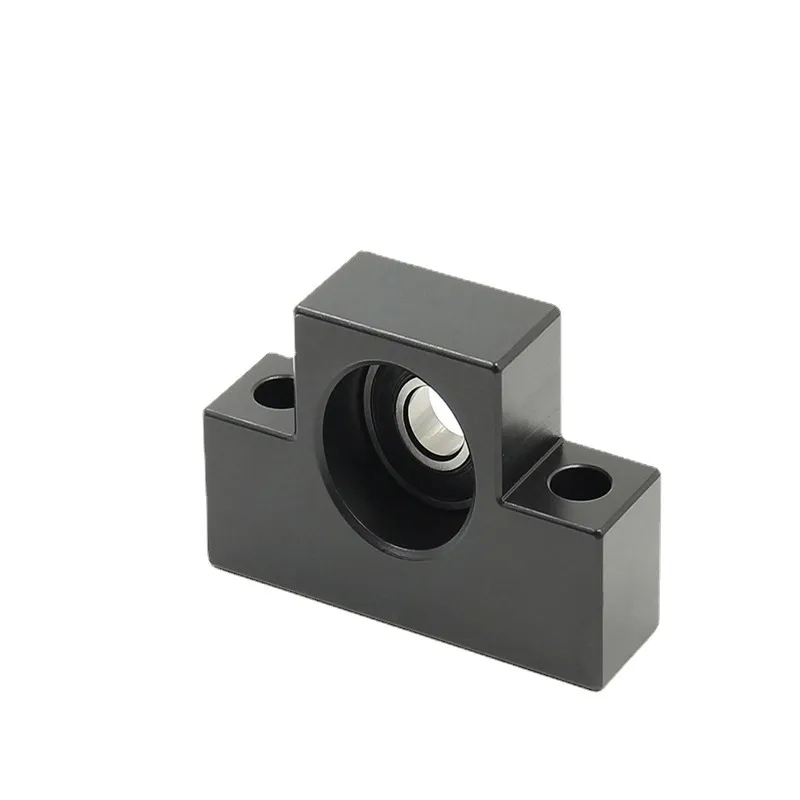Understanding Bearing Pedestals: Essential Components for Machinery Stability
2024-09-25
When it comes to industrial machinery and equipment, the importance of foundational components cannot be overstated. One such crucial element is the bearing pedestal. Often overlooked, bearing pedestals play a vital role in ensuring the stability, alignment, and performance of rotating machinery. In this blog, we’ll delve into what bearing pedestals are, their functions, types, and the benefits they offer in various applications.
What Are Bearing Pedestals?
Bearing pedestals are structural components designed to support bearings, which are essential for the rotation of machinery elements. These pedestals help to secure the bearings in place, providing a stable foundation that absorbs vibrations and maintains alignment. They are typically made from materials such as cast iron or steel, which offer the strength and durability needed for heavy machinery applications.
Functions of Bearing Pedestals
1. Support and Stability: Bearing pedestals provide the necessary support to hold bearings securely in place, ensuring that rotating components remain stable during operation. This stability helps to prevent misalignment, which can lead to premature wear and tear on machinery.
2. Vibration Absorption: Machinery can generate significant vibrations during operation. Bearing pedestals are designed to absorb these vibrations, minimizing their impact on the bearings and other components. This helps to prolong the life of the machinery and maintain optimal performance.
3. Load Distribution: Bearing pedestals help distribute the load from the rotating components evenly across the structure. This load distribution reduces stress on individual components and prevents deformation or failure over time.
4. Alignment Maintenance: Proper alignment is crucial for the efficient operation of rotating machinery. Bearing pedestals aid in maintaining this alignment by providing a solid base that keeps the bearings and shafts correctly positioned.
Types of Bearing Pedestals
1. Standard Bearing Pedestals: These are the most common type, typically used in various machinery applications. They come in various sizes and configurations to accommodate different bearing types and sizes.
2. Split Bearing Pedestals: These pedestals allow for easy installation and maintenance by splitting into two halves. This design makes it easier to replace bearings without removing the entire pedestal assembly.
3. Pillow Block Pedestals: Pillow block pedestals are designed with a housing that holds the bearing and provides additional support. They are often used in applications where alignment is critical, such as in conveyor systems.
4. Flanged Bearing Pedestals: These pedestals feature flanges that allow for easy mounting to a base or frame. They are commonly used in applications with limited space where secure attachment is necessary.
Benefits of Bearing Pedestals
- Increased Machinery Life: By providing stability, absorbing vibrations, and maintaining alignment, bearing pedestals help prolong the life of machinery components, reducing the need for frequent repairs or replacements.
- Improved Performance: With better support and alignment, machinery can operate more efficiently, leading to enhanced performance and productivity.
- Ease of Maintenance: Many bearing pedestal designs, such as split pedestals, make maintenance and bearing replacement simpler and quicker, reducing downtime in industrial settings.
- Versatility: Bearing pedestals can be used in various applications, from manufacturing equipment to agricultural machinery, making them a versatile choice for many industries.
Conclusion
Bearing pedestals are essential components that contribute significantly to the stability, alignment, and overall performance of rotating machinery. By understanding their functions and benefits, businesses can make informed decisions about machinery design, maintenance, and upgrades. Investing in high-quality bearing pedestals can lead to enhanced productivity, reduced downtime, and ultimately, a more efficient operation. Whether you’re in manufacturing, agriculture, or any industry that relies on rotating machinery, recognizing the importance of bearing pedestals is crucial for success.



